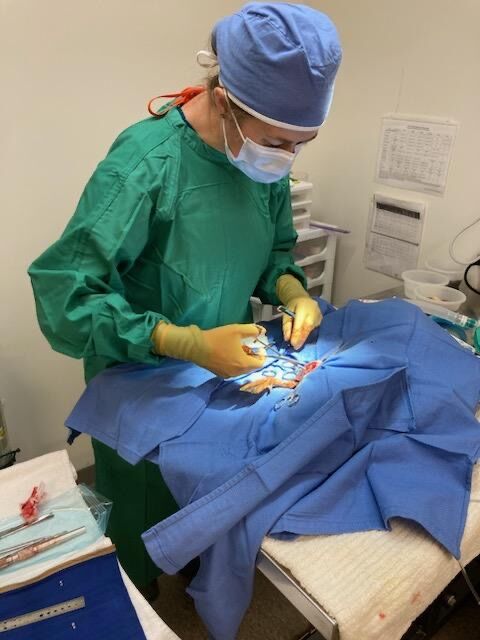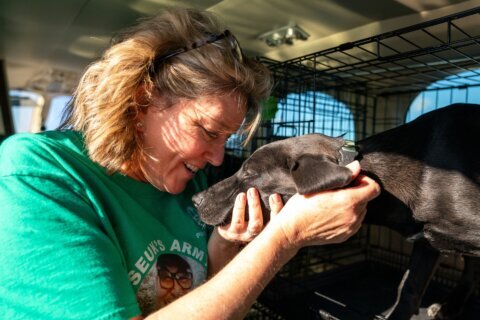Young animal lovers may want to consider a career in veterinary medicine, but wonder if the field is right for them.

There’s a lot to consider. Whether they work with domestic pets or wild animals, they’ll be taking on patients who may greet them with wagging tails or bared teeth. And the cost of college and veterinary school education has to be balanced against what their eventual earnings will be.
The Humane Rescue Alliance, which is based in D.C., is offering a virtual workshop where high school students can hear from veterinarians about working in the field, and the steps it takes to get the education they’d need.
Debbie Duel, education director with the Humane Rescue Alliance, told WTOP the session allows students to get a real-world look at the career along with lots of practical advice.
“The doctors who have shared with us in the past have not shied away from being realistic,” said Duel.
Among the things students may want to know, Duel said, are the answers to questions like “What courses to take? Do you have to have physics, when do you take chemistry?”
For Dr. Sarah Sirica, the clinic director at City Wildlife in D.C., the most common question she gets among younger students is “what we feed the animals” that are getting care at the rehabilitation center. At City Wildlife, Sirica cares for all kinds of local wild animals, from opossums to owls.
When addressing high school students, Sirica said she would stress that, “we work hard every day, and it’s not necessarily the kind of job where you can coast.”
She explained working with wildlife in particular “is just kind of go, go, go” pace of work because there are so many different species getting care and they all have very different needs.
When asked about some of the more challenging animals she’s cared for, Sirica said snapping turtles will keep vets on their toes — and perhaps counting their fingers.
“You do have to make sure where their head is at all times and, ideally, that it’s contained in something,” she said, explaining that not only do snappers have a powerful bite, but a long reach.
But Sirica said she does love working with wildlife because of the variety of animals that are brought in for care. There are, she said, “over 100 species that I treat every year” at City Wildlife.

Nineteen-year-old Prince Green, now a freshman at the University of Massachusetts Lowell, was among those students who took part in an online webinar as a high school student, and went on to serve as an intern at the Humane Rescue Alliance, an opportunity he said he’s grateful for.
“I’ve always been surrounded by animals; my father always had a bunch of dogs, fish, turtles. At one point, I had a guinea pig,” he said.
Green said he always knew he wanted to do something with medicine.
“I just kind of combined the two and figured I want to become a veterinarian,” he said.
Green said participating in the virtual workshop through the Humane Rescue Alliance confirmed that he was likely headed in the right direction. Now, he’s sure that he wants to work in emergency veterinary medicine.
“I’ve always found the ER, in general, to be a very fascinating place where you just have so much thrown at you, that I would never get bored in that setting,” he said.
Green’s advice to young people thinking about becoming a veterinarian is simple: “Do this because you genuinely love animals and you love medicine, and don’t do it necessarily for the pay,” he told WTOP.
There is a $25 fee for the webinar coming up on March 9, but Duel said no student would be denied access due to the inability to pay and there is information on financial assistance.
Students can register on the Humane Rescue Alliance’s website.
Applicants who have questions about financial assistance can email the humane rescue alliance at education@humanerescuealliance.org
Get breaking news and daily headlines delivered to your email inbox by signing up here.
© 2024 WTOP. All Rights Reserved. This website is not intended for users located within the European Economic Area.







